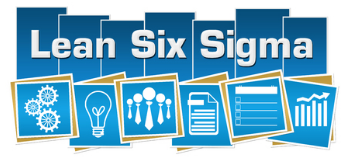- Home
- Continuous Improvement Certification Online
- 6 Six Sigma
six Sigma
six sigma: are you analyzing what is intended and how it should be?

Many of the companies or individuals pursue strategic objectives, without being clear in the first instance about the client's needs, if they have the adequate capacity, if the way in which the measurements of parameters and indicators are being derived to achieve the established metrics are the correct ones according to what is being considered.
It often happens that the key performance indicators are not congruent with a systematic vision of the organization, pressing for results in isolation, when an integration of departments under common objectives is required, all this after reducing costs and thus achieving better profitability. Faced with such a scenario, Lean Six Sigma is what you need to implement.
what is lean six sigma?

We would say that Lean Six Sigma is a process improvement methodology that combines two techniques, Lean and Six Sigma. The fundamental principle of Lean is the elimination of waste, while Six sigma is a method based on the analysis of data and metrics that examines the repetitive processes of companies and aims to bring quality to close levels to excellence, reducing defects as much as possible, aiming to reach the figure of 3.4 defects per million opportunities. And it differs from other methods in that it tries to prevent problems before they occur.
Therefore, the union of both methods, Lean and Six Sigma, combines a powerful approach to achieve business stability, reduce operating times and costs, increase quality and efficiently apply resources by eliminating processes that do not add value. To achieve this, Lean Six Sigma proposes a series of tools that make it possible to identify areas for improvement in different areas of the company.
how does lean six sigma applies to business practice?
The method includes a wide range of management techniques used to optimize processes and quality control. The best known and most important tool is the five-phase method, also called the DMAIC cycle.
How is it Achieved?
Creating an infrastructure with trained personnel, trained and focused on continuous improvement, supported by an organization by value chains.
Where can Lean Six Sigma be applied?
Lean Six Sigma can be applied to organizations of all nature (manufacturing, services, public administration), size and for all types of processes (transactional and productive).
lean six sigma in based on 5 principles

- Customer Orientation. One of the great successes of Lean Six Sigma is to consider the customer as the starting point to achieve the desired success.
- Management oriented to data and facts.
- Process orientation, process management and process improvement.
- Proactive management and collaboration without borders.
- Pursuit of excellence.
success factors in introducing lean six sigma

To implement the model successfully, there are several factors to consider, among which are:
- Management involvement.
- Knowledge of the model.
- Relationship with business strategy.
- Relationship with the client.
- Project selection.
- Organizational infrastructure.
- Change in business culture.
- Project management knowledge of the parties involved.
- Relationship with suppliers.
- Training of project participants in the six sigma methodology.
- Relationship with personnel planning.
some of the benefits lean six sigma

- Costs reduction.
- Productivity improvement.
- Market share increase.
- Customer loyalty.
- Cycle time reduction.
- Reduction of defects.
- Change of culture in the organization.
- Product and service development.
- An alternating range of possibilities.
InArtifexYou has materials endorsed by entities of international scope, so that you can strengthen your knowledge factor and obtain the certification you require, achieving great benefits to the companies and projects you carry out.
Sign up for our international certification programs!